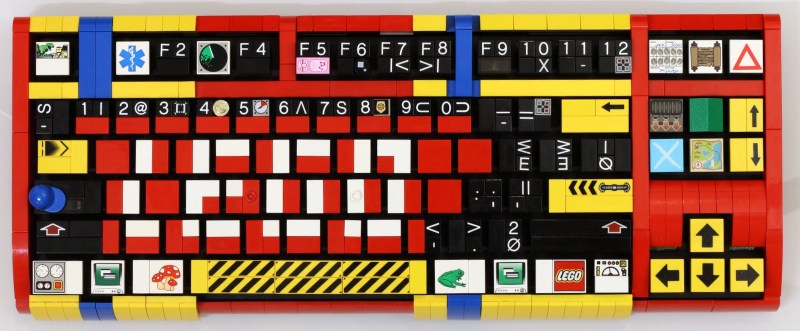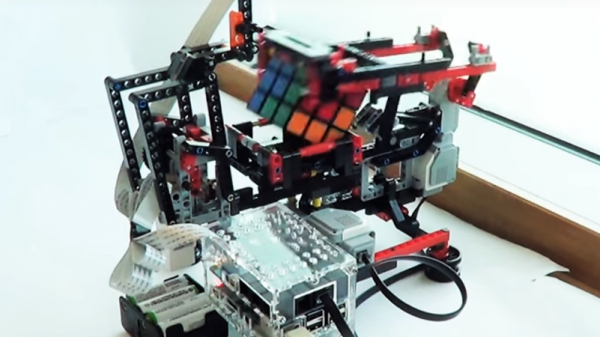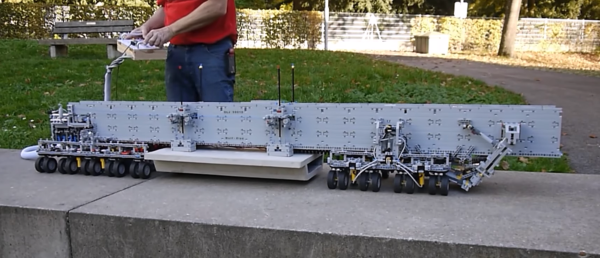LEGO has always been an excellent toy for both play and learning, and the Technic sets are a great starting point for any budding engineer. Not content to rest on their plastic, blocky laurels, LEGO introduced more advanced parts over the years, such as motors and battery packs to allow builders to propel their creations. Combine this mechanical philosophy with [Matt]’s Giant Lego Go-Kart and you have one heck of a project.
It all started months ago, when [Matt] built his original Giant Lego Go-Kart, a 5-times scaled up model of the original kit #1972-1. Achieved through the wonder of 3D printing, he had sized it up based off the largest parts he could fit on his printer. The Youtube video led to commenters asking – could it be driven?
He decided that radio control was definitely a possibility. Not content to simply bolt on a series of motors to control the drive and steering, he took the effort to build scaled up replica LEGO motors, even taking care to emulate the old-school connectors as well. A particularly nice touch was the LEGO antenna, concealing the Orange RX radio receiver.
There were some hiccups – at this scale & with [Matt]’s parts, the LEGO force just isn’t strong enough to hold everything together. With a handful of zipties and a few squirts of glue, however, the giant ‘kart was drifting around the carpark with ease and hitting up to 26km/h.
In the end, the build is impressive not just for its performance but the attention to detail in faithfully recreating the LEGO aesthetic. As for the next step, we’d like to know what you think – how could this be scaled up to take a human driver? Is it possible? You decide.



















